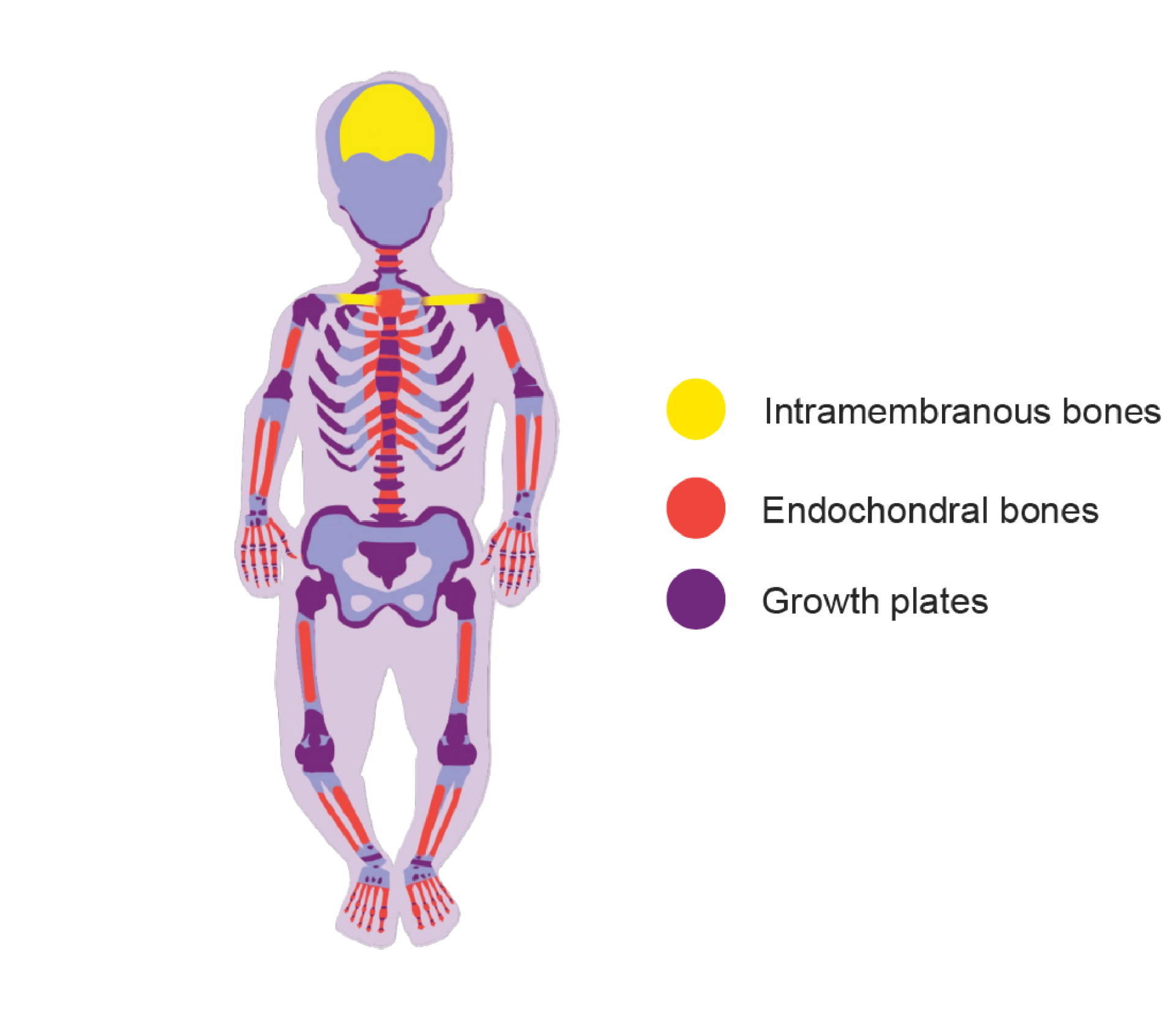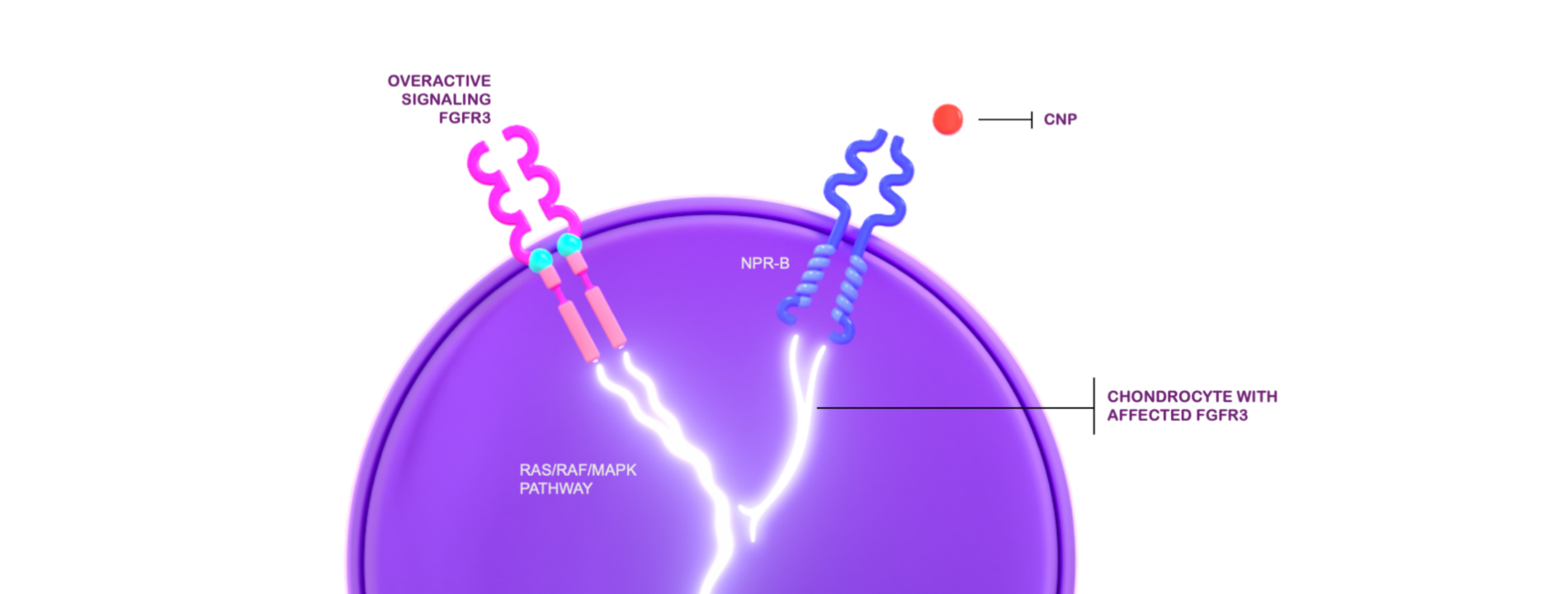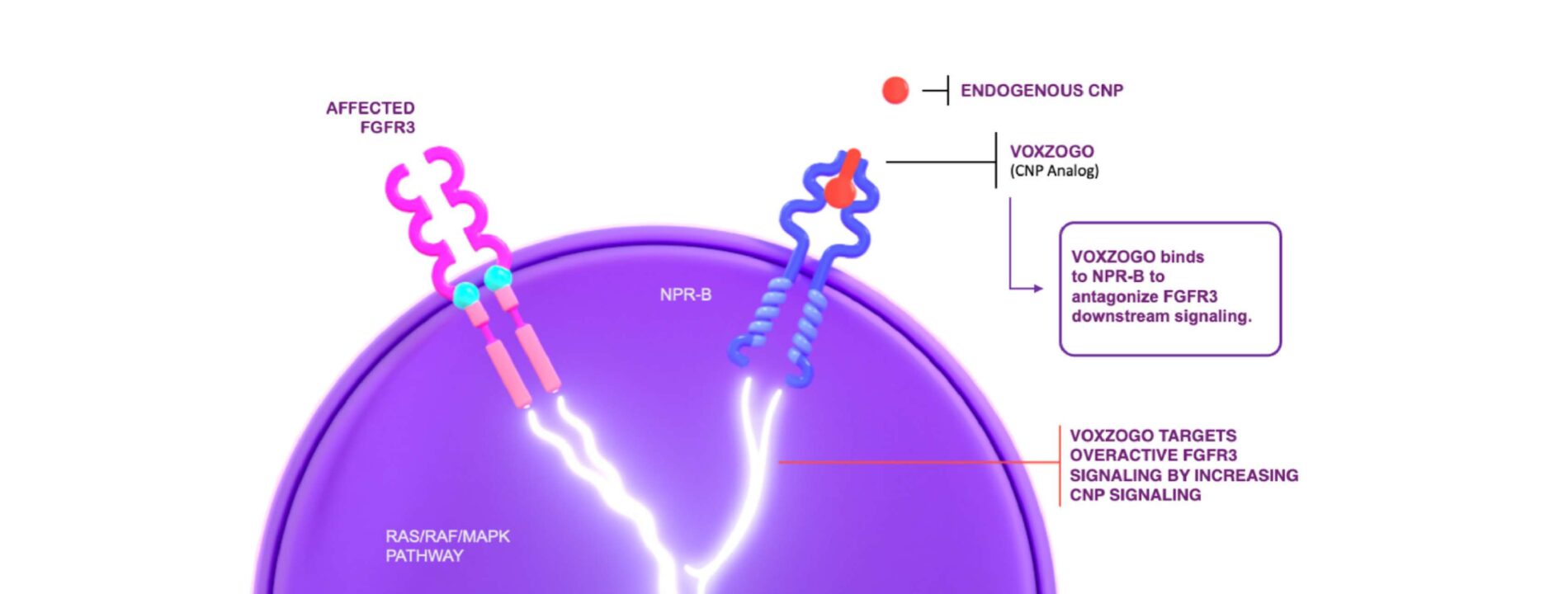Understanding achondroplasia
Bone development occurs through two distinct processes5,6
INTRAMEMBRANOUS OSSIFICATION
- Differentiation of embryonic mesenchymal cells into osteoblasts6
- Flat bones of the skull6
- Involved in the development of ~10% of the body’s bones7,8
ENDOCHONDRAL OSSIFICATION
- Takes place in ~90% of the skeleton7,8
- Replacement of a cartilage model by bone6
- Regulated by the fibroblast growth factor receptor 3 (FGFR3) signaling9


